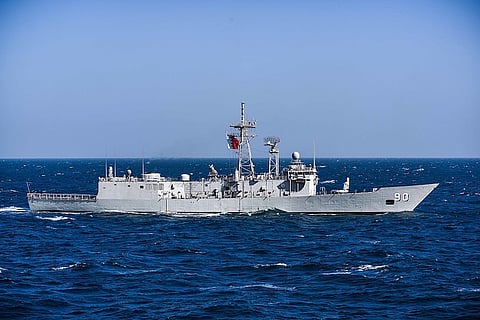

The UK-flagged tanker Stena Impero boarded and detained by Iranian forces in July is reportedly soon to be released, but tensions in the region remains high.
The US-led naval coalition, established after the seizure to facilitate protection of merchant vessels, transiting the Strait of Hormuz, from harassment, by fast attack craft of Iran's Islamic Revolutionary Guard Corps Navy, meanwhile continues to gain critical mass.
Founder nations USA and UK have in recent weeks been joined by Australia, Saudi Arabia, the UAE and Bahrain, while Kuwait is reportedly considering joining in the near future.
Australia will shortly be deploying a P-8 Poseidon long range maritime patrol aircraft, and an Anzac-class frigate of the Royal Australian Navy will commence escort duties with the coalition early in 2020.
It is not yet clear what contributions will be made by Saudi Arabia, Bahrain and the UAE. All have some offshore naval capability.
The order of battle of the Royal Saudi Naval Force includes seven French-built frigates, and two replenishment-at-sea tankers. The UAE Navy has nine missile-armed corvettes, while the Royal Bahrain Naval Force has a single ex-US Navy frigate.
Recent years have seen Saudi and UAE warships spending a radically increased time at sea, as they carry out operations in support of the campaign being waged against Houthi rebels in Yemen by the Saudi-led coalition This is likely to have improved their combat readiness and efficiency.
Conspicuous by their absence so far are warships of Asian, or mainland European navies. Multilateral discussions over possible participation by other EU nations in the coalition are continuing, but the situations has been complicated, both by Germany's early decision not to get involved, and by the UK's current participation.
According to some reports, however, both Tokyo and Paris are considering deploying warships to work in parallel with the coalition.
